I received a wonderful book some time ago now from a woman who I am very fond of. She’s an extraordinary person and quite the artist. She thought of me and my photography and was very considerate in gifting this book to me. The book is called, A Wilder Life: A Season-by-Season Guide to Getting in Touch with Nature by Celestine Maddy and Abbye Churchill. The book is filled with inspiring photography and it serves as a guide for each season. It describes how we can connect with nature through topics covering self-reliance, gardening, cooking, health and beauty, and the wilderness.
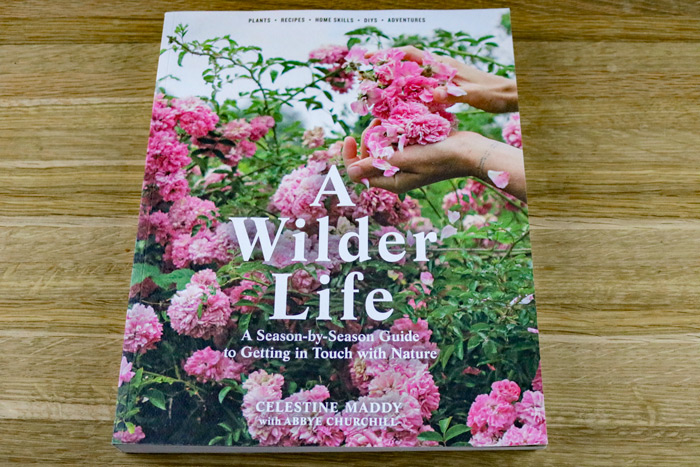

With autumn on the horizon, I wanted to get ready for all the good things that come with the season. I’m craving the cool and crisp air and all the activities we enjoy, such as hiking, bike riding, apple and berry picking, harvesting from the garden, and the baking that goes along with that. I can’t wait for the delicious aroma of spices such as cinnamon, nutmeg, and clove coming from the kitchen. By the way, we just picked a five-pound zucchini from the garden. We are sure going to be making a lot of zucchini bread!
Anyway, I was looking through the book and I found a nice section on Ikebana. This got me thinking about one of the presentations that I gave in college. I had taken an Asian studies class and when we got to the section on Japan, we were required to do a presentation that could also include a demonstration. I chose to do my demonstration on Ikebana. I purchased flowers and a special vase that is required for Ikebana. I settled on a Starry Night square-shaped Ikebana vase that I found on the Georgetown Pottery website. When I received the vase, I was quite pleased and thought it was a very nice interpretation of Vincent Van Gogh’s, The Starry Night, 1889. Van Gogh just so happens to be my favorite artist. My demonstration went very well and everyone in the class, including my professor, wanted to know where I had purchased the vase. This was also right before the break and everyone was looking for gifts for the holidays. I had found this very amusing and I ended up feeling like a sales rep for the company by the end of my demonstration.
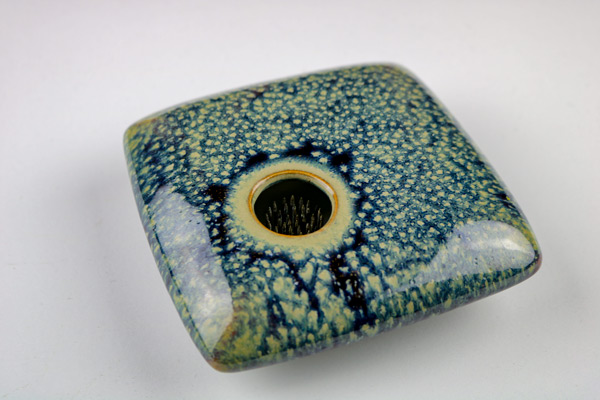
Georgetown Pottery’s ceramic Starry Night Ikebana vase was handmade in Georgetown, Massachusetts.
With the idea from the book and all of the beautiful flowers we have growing here in the garden, I decided it would be the perfect time to make an Ikebana arrangement. At this point, you are probably asking, what is Ikebana? I was just getting to that. In this post, I would like to share the basic principles of Ikebana and the style that I have chosen to make.
What is Ikebana?
Ikebana literally means “living flowers,” and is the ancient and disciplined Japanese art of flower arranging, also known as kado, the “way of flowers.” The name comes from the Japanese words, ike, meaning “alive” or “arrange” and bana, meaning “flower.” Similar to many of the traditional Japanese arts, Ikebana follows the philosophy of practice with a focus on personal development as well as artistic achievement. Design principles follow the Zen Buddhist philosophical traditions of the simplicity of harmony between nature and humanity. This concept is influenced by the minimalist design principles of a rhythmic creation of balance, harmony, and form between flowers and their surroundings. The life and death of the flowers are balanced because even though the flowers are cut and taken from their old environment, they are put into a new environment, with the addition of water, and given the chance to flourish again.
Materials required for Ikebana:
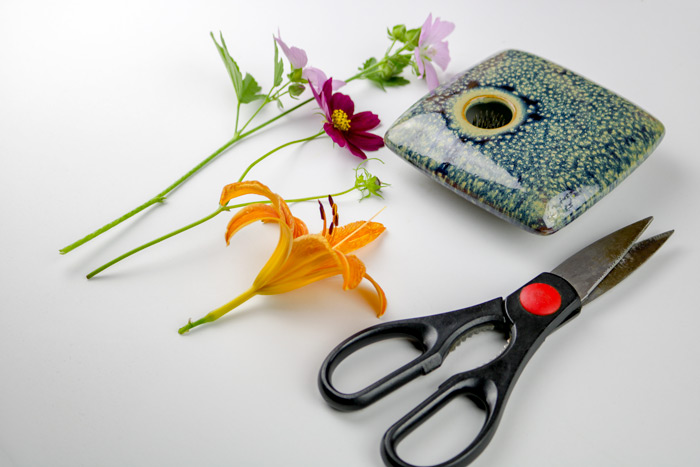
While practicing Ikebana, traditional scissors are used to cut flowers, but regular scissors work just as well.
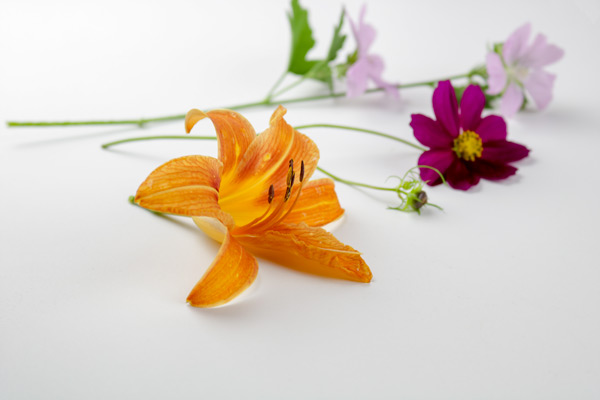
While choosing your flowers, make sure to know their proper names, because it is disrespectful otherwise. I chose to work with musk mallow Malva moschata, cosmos Coreopsideae, and an orange lily Lilium bulbiferum.

Flowers are arranged in a shallow vase and secured on a kenzan or needlepoint holder, also known as a metal frog.
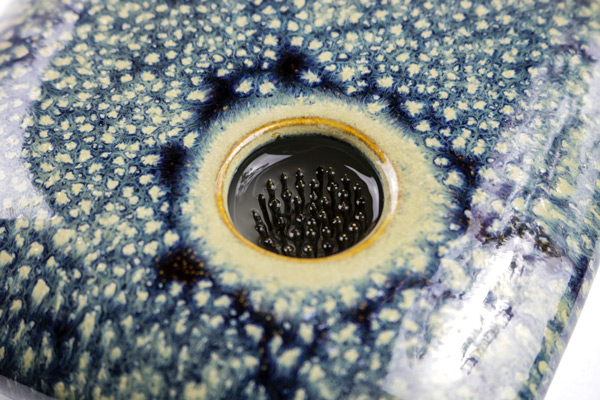
This is also the area that is filled with water to aid in keeping flowers fresh.
Styles of Ikebana:
There are three basic styles of Ikebana consisting of cascading, slanting, and upright styles. While Western arrangements favor a full bouquet of flowers, Ikebana follows the Zen school of aesthetics; bare and minimal and achieving more with less. In fact, in many arrangements, there are only three or so blooms, so the focus is on the actual form of the flower. This basic form puts emphasis on shape, line, and form. The lines consist of three main vertical lines of varying height. These lines are used to convey the harmony that symbolizes the three main points between heaven, humankind, and earth. The artist’s intention behind each arrangement is shown through color combinations, natural shapes, and graceful lines.
The distinction between Ohara (cascading style), Nageire (slanting style), and Moribana (upright style) can be observed by the style of container used. Nagaire is a single flower arranged in a narrow-mouthed, tall container without the use of a kenzan or a metal frog. This style has the main stem hanging lower than the rim of the container. Flexible materials are used to create beautiful lines that are balanced with flowers. Unshin Ohara broke away from the Ikenobo School and started the Ohara School. In 1895, he came up with a new style called Moribana. Moribana is considered to be the most basic arrangement. Moribana literally means “piled-up flowers.” Flowers are arranged in a shallow vase and secured on a kenzan or needlepoint holder, also known as a metal frog. This creates a beautiful volume that can be viewed from three sides. The main idea is to arrange the flowers to heighten the appeal of a vase. Moribana shares an emphasis on the natural beauty and characteristics of flowers and plants. There are three common Moribana styles, upright, slanting, and water-reflecting, with many variations within each of these styles. Beginners will usually start by learning the upright style. I will be presenting this style.
Creating a Ikebana arrangement in the Moribana style:
A key principle in Ikebana is not only the importance of creating beautiful flower arrangements but the importance of the journey as well. This type of meditation technique and observation has been practiced for many centuries by Buddhist monks. The idea of spiritual enlightenment through concentration and practice is a key element in Zen Buddhist philosophy. For many practitioners of this art, this is a lifelong journey and lesson in achieving an inner calm and spiritual connection to the world. The spiritual aspect of Ikebana is considered a very important aspect to its practitioners.
Silence is practiced during the art of Ikebana. It is a time to appreciate things in nature that people often overlook because of their everyday busy lives. One becomes more patient and tolerant of differences, not only in nature but also in general. Through the practice of Ikebana and looking inward, one finds Zen and feels a closeness with nature, which provides relaxation for the mind, body, and soul.
There are three main types of flowers and branches used. The longest branch, called shin, represents heaven. The medium branch, soe, represents humanity and the shortest branch, tai, represents earth. The length of the shin can be up to 1.5 the length of the vase. The length of the soe can be 3/4 of the shin and the tai can be 3/4 the length of the soe. Additional flowers can be added after these three main branches are placed in the vase. This is where the prongs of the kenzan will come into use for allowing the flowers to be placed in an upright position.
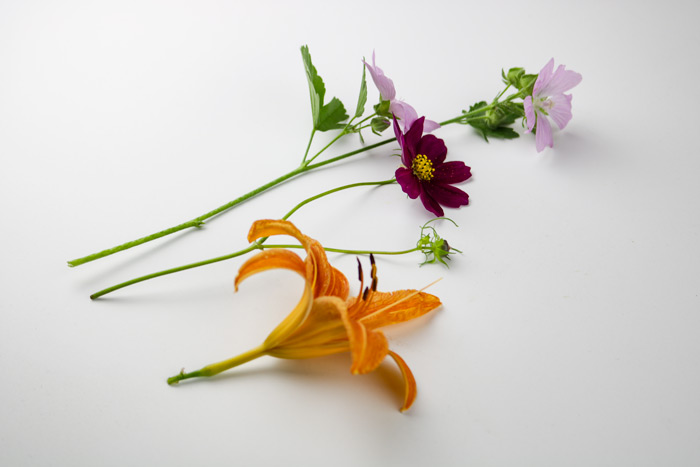
From the top: shin: musk mallow Malva moschata, soe: cosmos Coreopsideae, and tai: orange lily Lilium bulbiferum.
Arranging your materials:
Moribana arrangements are similar to sculpture. These arrangements are triangular in shape and take advantage of three-dimensional space in every direction.
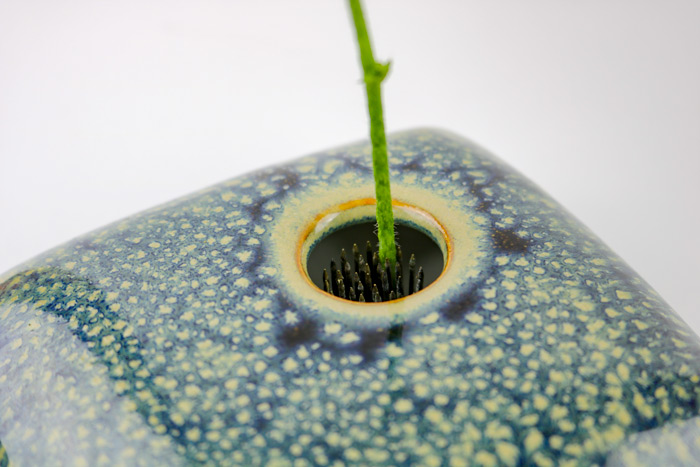
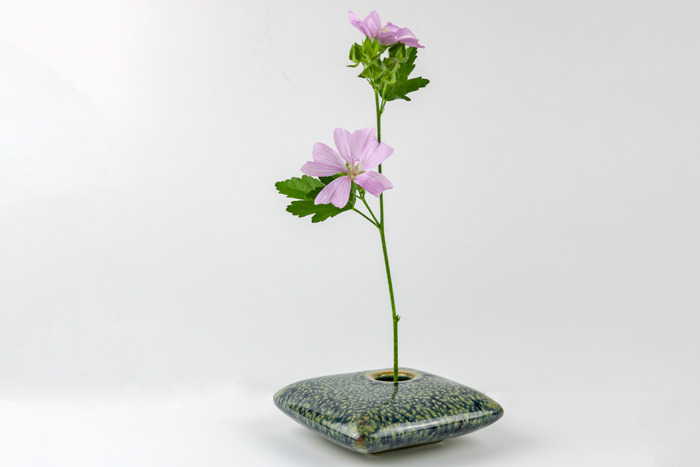
You can create the most basic style by placing the shin at the center back of the kenzan.
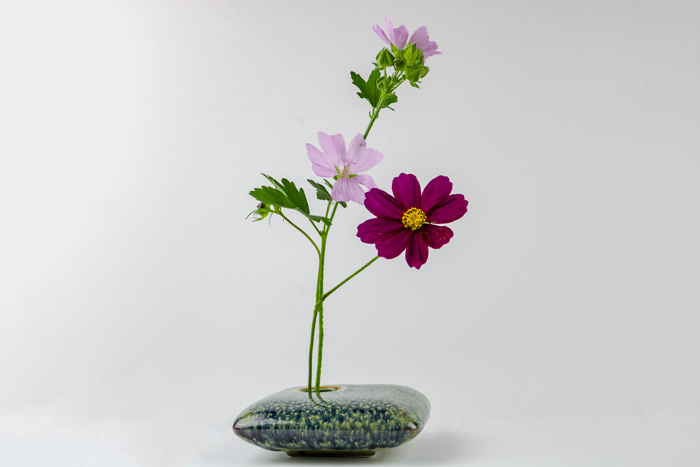
Next, place the soe forward and left of the shin.
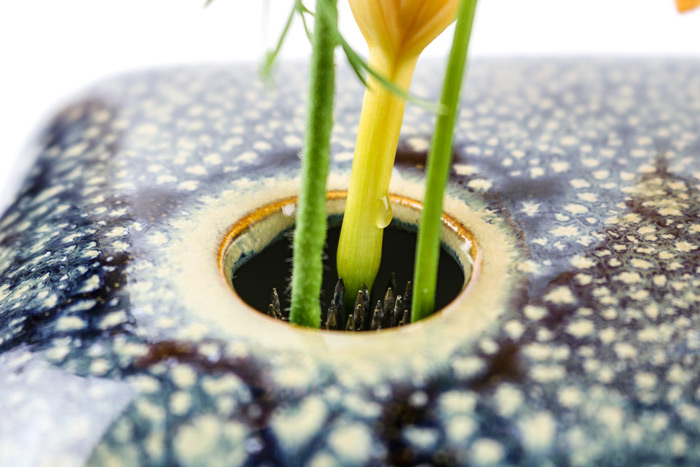
Last, place the tai to the right of the soe and at the front.
Here are a few different photographs of my finished Ikebana arrangement:


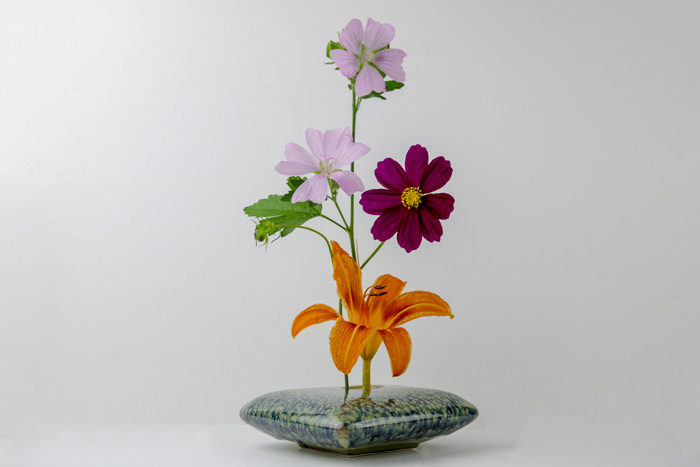
As you can see, Ikebana follows the philosophy of practice with a focus on personal development as well as artistic achievement. There are endless possibilities when choosing materials for your arrangements. Also, remember how all of your materials work together and that you have achieved harmony and balance in yourself through your creation.
Leave a Reply